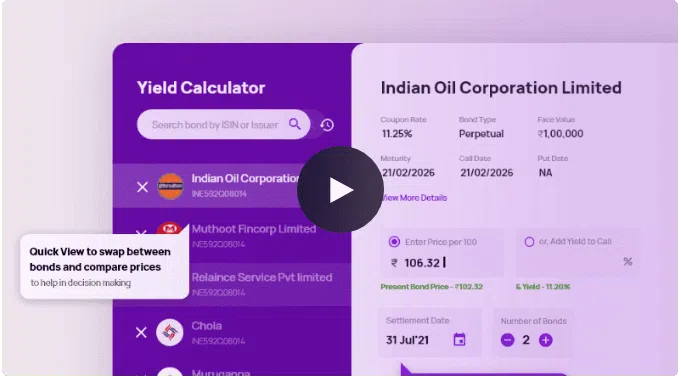What Is a Floor?

In everyday life, a “floor” is something that supports you — it’s the base you stand on. In finance, the idea isn’t much different. A floor simply means a minimum value something shouldn’t fall below. Whether it’s interest rates, returns or the price of an asset, having a floor helps protect investors from bigger losses. It’s a way to build in some peace of mind, especially when markets get unpredictable. One area where this comes in handy is with convertible bonds — and that’s where the bond floor comes into play.
What Is a Bond Floor?
A bond floor refers to the minimum value a convertible bond can trade for, based on the value of a comparable non-convertible bond (also called a straight bond). It acts like a safety net — no matter how volatile the equity market is, the bond won’t fall below this floor unless the issuer defaults. Think of it as the protective foundation beneath a house: even if the roof (the equity component) gets shaky, the base (the bond value) keeps things stable.
Basics
Convertible bonds are hybrid instruments — part debt, part equity. They give investors the option to convert into shares of the issuing company, while also offering fixed interest payments. But what happens if the company’s stock tanks and conversion becomes unattractive? That’s where the bond floor kicks in. It ensures that, even in a worst-case scenario, the bondholder still holds an instrument with intrinsic value — derived from its fixed interest payments and maturity value.
In short, a bond floor is the minimum price the market believes this bond is worth without its equity conversion option.
Exploring Bond Floors
To calculate the bond floor, we strip away the equity conversion aspect and look at the bond purely as a debt instrument. We then discount the future interest payments and the principal repayment at prevailing market rates for similar bonds (same issuer rating and tenor). That gives us the fair value of the straight bond — the bond floor.
The market may trade a convertible bond above this floor if there’s potential for share price appreciation, but rarely below it (unless there’s increased credit risk). Investors often compare the market price with the bond floor to understand how much premium they’re paying for the conversion feature.




The Significance of the Bond Floor in Convertible Securities.
In convertible securities, the bond floor plays a crucial role in risk management. It helps investors gauge how much downside protection they have if the equity part underperforms. This feature makes convertibles attractive during uncertain times — you get a fixed return (thanks to the bond component), with the upside potential of converting to equity if things go well.
Also, the bond floor impacts how investors price convertible bonds. If the bond is trading near the floor, it means the equity upside is negligible or risky. If it trades far above, investors are betting on equity gains. This makes the bond floor a key metric in pricing and comparing convertible securities.
Illustrating Bond Floor Dynamics
Let’s look at an example.
Imagine a convertible bond from XYZ Ltd. with a 5-year maturity, paying 6% annual interest. Now, similar straight bonds in the market are yielding 7%. When we discount XYZ’s cash flows using the 7% yield, we get ₹920. That’s your bond floor.
If the XYZ convertible bond is currently trading at ₹960, the ₹40 difference is the price investors are willing to pay for the option to convert into equity. This premium reflects expectations of the company’s stock performance. Now, suppose XYZ’s share price falls drastically, making conversion pointless. Even then, the bond may not drop below ₹920 — because investors will still receive the 6% interest and principal on maturity. This is the bond floor dynamics at play.
Exploring Bond Floors in the Context of Constant Proportion Portfolio Insurance (CPPI)
Let’s get a little technical — but stay with us.
In portfolio strategies like CPPI, the bond floor plays a central role. Here, a portion of the portfolio is allocated to risk-free or low-risk assets (like government securities or high-grade bonds), forming the floor — the amount you don’t want to lose. The rest is invested in higher-risk instruments (like equity) to chase higher returns.
In this case, the bond for the floor secures your capital base. If markets fall, assets are shifted from equities back to bonds to maintain the floor. This strategy helps manage downside risk, similar to how the bond floor provides value support in convertible bonds. So yes — floor in finance is more than a technical term. It’s a concept used across investing strategies to anchor portfolios during market turbulence.
Conclusion
In the world of investing, downside protection is as crucial as upside potential. A bond floor ensures that even if market conditions sour, the value of a convertible bond doesn’t free-fall. It’s the built-in safety mechanism that gives confidence to bondholders. Whether you’re evaluating a convertible security or designing an investment strategy like CPPI, understanding the bond floor helps you balance risk and reward.
For investors, especially in volatile markets, it’s comforting to know that certain instruments come with a cushion. The floor bond may not promise sky-high returns, but it does offer peace of mind — and that’s a valuable feature in any portfolio.
FAQs
Q1: How do you calculate a bond floor?
To calculate the bond floor, you discount the bond’s future coupon payments and final principal repayment using the yield of a comparable non-convertible bond. This gives you the minimum fair value of the bond without the equity conversion option.
Q2: Why is the bond floor important for investors?
It provides downside protection. If the issuer’s share price falls and the conversion option is worthless, investors still have the value of the fixed-income stream to rely on.
Q3: Can a convertible bond trade below the bond floor?
Usually no, unless there is increased credit risk or market stress. In normal circumstances, the bond trades at or above the floor due to the equity option embedded.
Q4: What does it mean if a bond is trading far above its floor?
It means investors expect the equity component to gain value. The premium above the floor reflects their optimism about the issuer’s stock performance.
Q5: Is a bond floor unique to convertible bonds?
Primarily, yes. While the concept of a “floor” exists in broader financial planning, the term “bond floor” is specifically associated with convertible bonds and related portfolio strategies like CPPI.
Disclaimer : Investments in debt securities/ municipal debt securities/ securitised debt instruments are subject to risks including delay and/ or default in payment. Read all the offer related documents carefully.


















Indiabonds | 5 min

Indiabonds | 5 min



































